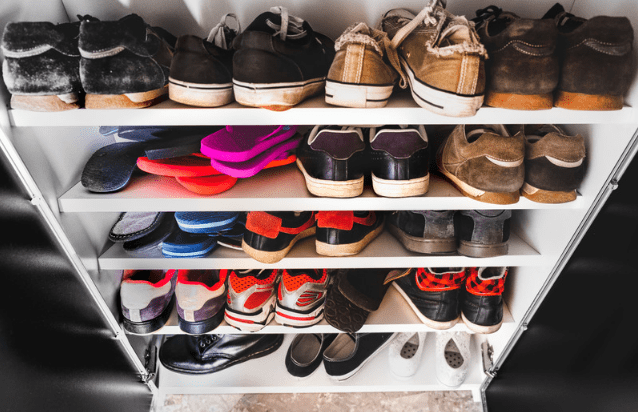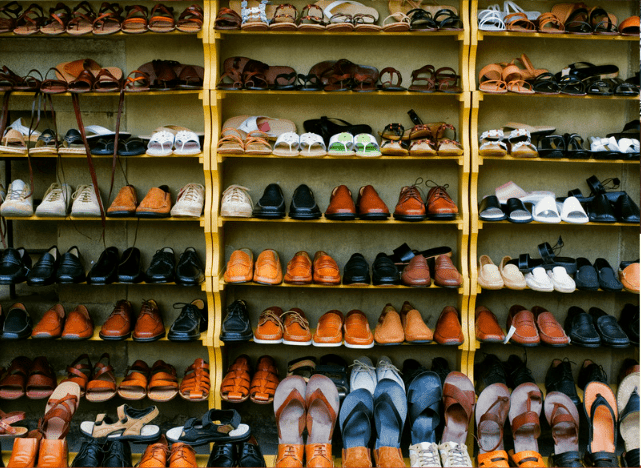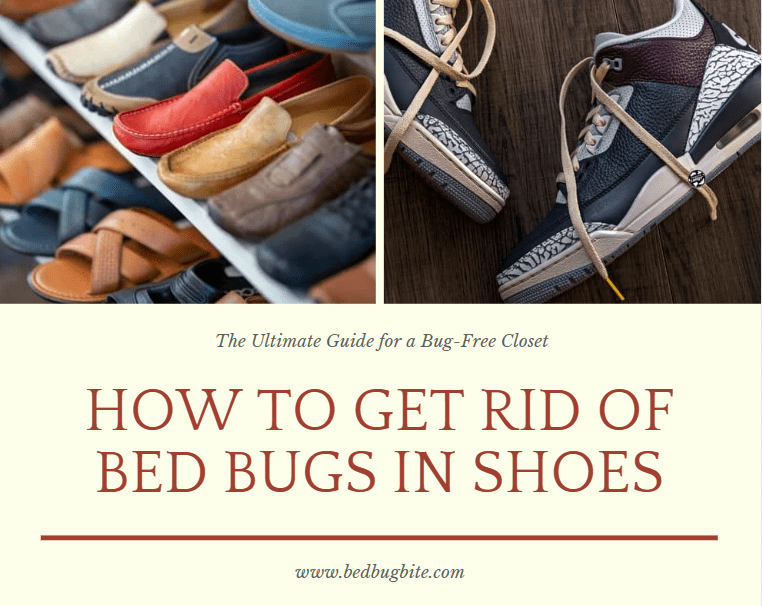Introduction
Imagine slipping your feet into your favorite pair of sneakers, only to find that you’ve given shelter to a colony of bed bugs! The sensation is not just unpleasant—it’s a loud warning bell. Bed bugs in shoes are more than a mere nuisance; they’re a sign of a lurking problem that can quickly escalate into a full-blown infestation in your home. But fear not, you’ve come to the right place. This comprehensive guide arms you with the essential knowledge and practical steps you need to eradicate these tiny pests from your shoes and safeguard your closet. So, How to Get Rid of Bed Bugs in Shoes?
Backed by scientific insights and proven techniques, we’ll lead you through the whole process, from identifying the signs of infestation to selecting effective treatment options. By the end of this guide, you’ll not only reclaim your shoes but also peace of mind, knowing you’ve taken decisive action to solve a pressing issue.
How to Get Rid of Bed Bugs in Shoes
If you’re perplexed as to why your shoes have become a breeding ground for bed bugs, understanding the science behind their behavior could offer some much-needed clarity. Bed bugs are notorious hitchhikers, always on the hunt for dark, cozy spots close to their next meal—humans. Shoes offer exactly these conditions: they’re dark, confined, and often stored near places where people rest, like bedrooms and closets. So, it’s not surprising that these bugs find shoes appealing.
Why Bed Bugs Choose Shoes as Hiding Spots

Bed bugs are not just random invaders; they’re strategic in their choices. Your shoes offer them easy concealment, making it convenient for these pests to stay close to their food source—your blood—while staying hidden. Shoes are often tossed into closets or left under beds, providing bed bugs easy access to both hiding and feeding areas. Read on for more information on How to Get Rid of Bed Bugs in Shoes.
Life cycle of Bed Bugs in Confined Spaces
You might wonder how a bug can thrive in such a restricted area. The answer lies in the bed bug’s life cycle. From eggs to nymphs to mature adults, bed bugs are adaptable creatures. They require minimal space, surviving and reproducing even in confined conditions. This adaptability is part of what makes them so challenging to exterminate.
Common Bed Bug Species That Infest Shoes
While the Cimex lectularius is the most common species known for household infestations, it’s essential to know that other species like the Cimex hemipterus can also find refuge in your shoes. Differentiating between them isn’t merely academic; it could affect the effectiveness of your extermination methods. For more details on bed bug species, check out this comprehensive guide from the Centers for Disease Control and Prevention.
Identifying Bed Bug Infestation in Shoes
Before you dive into extermination methods, it’s crucial to accurately identify whether your shoes are indeed infested with bed bugs. Overlooking this step or making an incorrect assessment could lead to ineffective treatments, costing you time and money. This section will guide you through various ways to unmistakably confirm the presence of these unwelcome guests in your footwear.
Visual Clues: What to Look for Inside and Around the Shoe
Start your investigation by meticulously examining your shoes. Look for tiny, dark spots, which could be bed bug feces, or small, translucent skins, which are shed as bed bugs grow. These are telltale signs of an infestation. You might also discover the bugs themselves, which appear as small, reddish-brown insects.
Other Sensory Clues: Odor and Other Signs
If you notice a distinct, sweet, musty odor emanating from your shoes, that could be another indication of bed bug presence. This scent is produced by the bugs’ scent glands and is often strong enough to be detected by the human nose.
Use of Bed Bug Detection Tools: Traps and Monitors
To confirm your suspicions, you might consider using specialized bed bug detection tools. Devices like bed bug traps and monitors can capture the bugs, making it easier to identify the problem definitively. They can be particularly useful when the visual or sensory clues are inconclusive.
Immediate Steps: Containment and Isolation
Time is of the essence when you discover a bed bug infestation in your shoes. Immediate containment and isolation of the affected footwear can prevent the bugs from migrating to other areas of your home. In this critical section, we’ll discuss practical steps for quick containment, offering both DIY hacks using household items and store-bought options specifically designed for bed bug containment.
The Importance of Segregating the Infected Shoes
The moment you confirm the presence of bed bugs in your shoes, separate them from your other belongings. Place the affected footwear in a sealed plastic bag or container. This immediate action will restrict the bugs’ movement and minimize the risk of them infesting other areas.
DIY Hacks for Quick Containment Using Household Items
While specialized products are available for bed bug containment, you may also use everyday household items for immediate action. Ziploc bags, plastic containers with airtight lids, or even tightly wrapped plastic sheets can serve as temporary containment solutions. Seal the openings securely with tape to ensure that no bugs escape.
Store-Bought Options: Specific Bags and Boxes Designed for Bed Bug Containment
For long-term containment or for individuals dealing with a severe infestation, specialized bed bug bags and boxes can be a worthy investment. These are designed with bed bug-proof materials and often feature zippers that are specifically constructed to prevent escape.
Treatment Options: Chemical and Non-Chemical Methods
Once you’ve successfully contained the infected shoes, the next logical step is to treat them to exterminate the bed bugs. There’s no one-size-fits-all answer here; your approach will depend on various factors including the extent of the infestation and your comfort level with using chemicals. This section explores both chemical and non-chemical methods, providing an in-depth look at each to help you make an informed decision.

Chemical Methods
Over-the-Counter Sprays: Their Effectiveness and Limitations
Sprays containing pyrethroids or neonicotinoids can kill bed bugs on contact and offer residual protection. However, some bed bug populations have developed resistance to these chemicals, making them less effective for long-term eradication.
Professional-Grade Chemical Treatments: What Exterminators Use
For persistent or severe infestations, professional-grade chemical treatments are the most effective. Licensed exterminators use a variety of potent substances that not only kill adult bed bugs but also their eggs. These treatments are often more expensive but guarantee comprehensive extermination.
Non-Chemical Methods
Heat Treatment: The Role of Temperature in Bed Bug Eradication
Heat is a proven bed bug killer. Submerging your shoes in hot water at temperatures above 120°F for at least 30 minutes can effectively kill all stages of bed bugs. Alternatively, you can use a specialized bed bug heat box designed for shoes and small belongings.
Cold Treatment: Using Freezing Temperatures to Kill Bed Bugs
Cold can also be effective in killing bed bugs. Freezing your shoes at temperatures below 0°F for a minimum of four hours can achieve a similar extermination result as heat treatments.
Precautions: Safeguarding Your Other Items
Getting rid of bed bugs from your infested shoes is a significant step, but let’s not forget about the other items that share the same space. Whether it’s the adjoining areas like closets and storage boxes, or other footwear and clothing, preventive measures are necessary. This section offers actionable strategies to protect these susceptible items from becoming the next bed bug hub.
Inspecting and Treating Adjoining Areas: Closets, Storage Boxes, Etc.
Start by inspecting the surroundings of the infested shoes. Check your closets, storage boxes, and any other area where you keep your shoes. This examination will ensure that any potential bed bug hideouts are detected and treated. Vacuum the spaces thoroughly and consider applying a light layer of bed bug-proof powder.
Protecting Other Footwear and Clothing from Bed Bugs
The adjacent footwear and clothes are at a high risk of infestation if you’ve found bed bugs in one pair of shoes. Take precautionary steps by washing these items in hot water, if possible, and drying them on the highest heat setting. Store these items separately until you’re sure the threat has been entirely neutralized.
Ongoing Preventive Measures: Sprays, Powders, and Traps
Keeping a bed bug-free environment is an ongoing process. Consider applying residual bed bug sprays or powders that provide long-lasting protection. Invest in bed bug traps and place them in strategic locations to monitor any resurgence. These tools act as an early warning system, allowing you to take prompt action before a new infestation becomes unmanageable.
For a comprehensive list of preventive products certified by professionals, refer to this guide by the American Pest Management Association.
Cost and Time Considerations: DIY vs. Professional Solutions
Eliminating bed bugs from your shoes, and by extension, your living spaces, will require a certain investment of both time and money. The resources you’ll need to allocate can vary significantly based on whether you opt for DIY methods or professional solutions. This section outlines the costs and time commitments associated with each, enabling you to make a well-informed decision tailored to your situation.
The Cost Factor: Expense Breakdown of DIY and Professional Methods
The DIY approach, while initially seeming more economical, can accumulate costs over time, especially if multiple treatments are needed. Over-the-counter sprays, heat boxes, and specialty bags can add up. On the other hand, professional extermination comes with a higher upfront cost but typically includes guarantees, making it a one-time investment.
Time Commitment: How Long Does Each Method Take?
It’s crucial to remember that time is also a resource. DIY methods require a significant amount of personal time for monitoring, application, and follow-ups. Professional services, while quicker, may require you to vacate your premises for a certain period, so plan accordingly.
Weighing the Pros and Cons: What’s Best for You?
Ultimately, the choice between DIY and professional services hinges on various factors including the severity of the infestation, your comfort level with chemical treatments, and your budget constraints. Each method has its merits and drawbacks, so weigh them carefully before deciding.
Conclusion: Reclaim Your Bug-Free Life Today
You’ve now navigated the complex landscape of bed bug eradication from shoes, a problem that, while specialized, is far from uncommon. We’ve covered everything from the science of why bed bugs are attracted to shoes, methods for identification, various treatment options, and even how to safeguard your other belongings. Armed with this knowledge, you’re well-equipped to tackle a bed bug issue head-on and reclaim a bug-free life.
Additional Resources for Continued Learning
For those interested in deepening their understanding of bed bugs, consider referring to the EPA’s comprehensive guide on bed bug control. You can also stay updated on the latest bed bug eradication techniques and news by subscribing to our newsletter.
Act Now: Your Next Steps
Don’t delay! The sooner you address this issue, the easier it will be to resolve. Whether you decide to go the DIY route or bring in professionals, taking prompt action is crucial. We have now reviewed How to Get Rid of Bed Bugs in Shoes.




